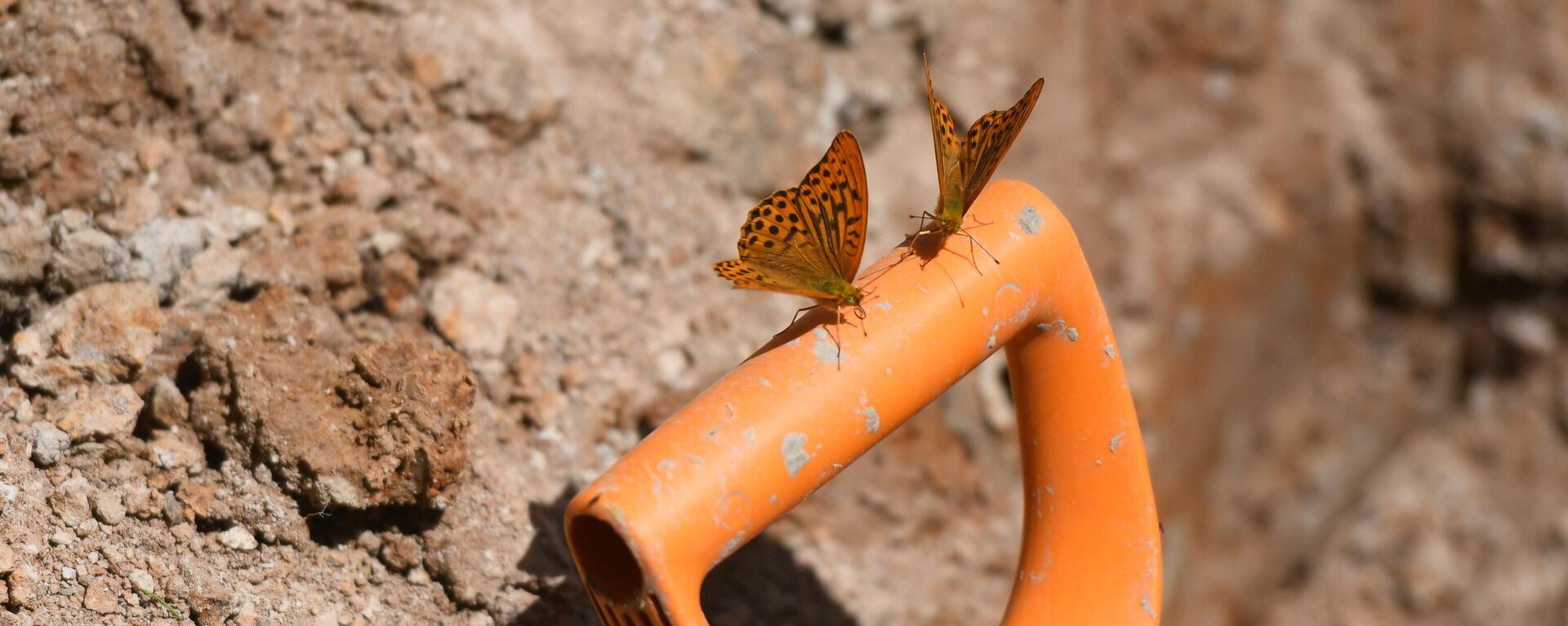https://sputnikglobe.com/20240311/archeologists-unearth-massive-plague-victim-mass-grave-in-nuremberg-1117247560.html
Archeologists Unearth Massive Plague Victim Mass Grave in Nuremberg
Archeologists Unearth Massive Plague Victim Mass Grave in Nuremberg
Sputnik International
A mass plague victim grave, possibly the largest ever found in Europe, was discovered while constructing a retirement home in Nuremberg, Germany.
2024-03-11T03:40+0000
2024-03-11T03:40+0000
2024-03-11T03:40+0000
beyond politics
nuremberg
germany
mass grave
science & tech
archeology
bubonic plague
https://cdn1.img.sputnikglobe.com/img/07e8/03/0b/1117247405_0:60:1140:701_1920x0_80_0_0_20f4835fb33fc86b316401212ab056e5.jpg
Archeologists in Nuremberg, Germany have stumbled on a mass grave that could be the largest mass burial for victims of the plague ever found.Roughly 1000 human remains have been pulled from the site, which was found during the construction of a retirement home, but experts estimate that more than 1,500 bodies could be buried there.Precise dating has not yet been performed, but radiocarbon dating pegs the bones as coming from the 15th to 17th centuries, but other hints found at the site put it in the 1630s.Among the remains, archeologists also found a letter dated 1634 that describes a plague outbreak in the city from 1632 and 1633 and says around 2,000 bodies were buried at the site. The bodies were put into eight mass burials, which can be broken down into two groups, one slightly more recent than the other, the researchers said.Plague outbreaks were common in Europe and Nuremberg specifically, with outbreaks occurring roughly every ten years in the city, starting in the 14th century. There is even a plaque to plague victims in St. Rochus cemetery, but most plague victim mass burials were held outside of the city.Interestingly, some of the bones have turned green after being buried. Archeologists say this is because the site was used as a waste site for a nearby copper mill. Some coins from the early 20th century were also found amongst the remains.The site will provide researchers insight into more than just the plague itself, but society at the time as well. Since the plague affected people of all ages and classes, the remains found at the site will give researchers a snapshot of society as a whole, rather than just the lives of individuals.Researchers also hypothesize that the site may have been necessary because of societal conditions brought on by the Thirty Years War, which ran from 1618 to 1648.
https://sputnikglobe.com/20240310/tombs-rediscovered-near-uk-military-base-in-cyprus-by-archaeological-survey-1117244076.html
nuremberg
germany
2024
News
en_EN
https://cdn1.img.sputnikglobe.com/img/07e8/03/0b/1117247405_64:0:1077:760_1920x0_80_0_0_6c4f633a7f08dfb21cfefc64a38a7dc6.jpg
mass burial ground, mass grave, bubonic plague in nuremberg, black plague in germany
mass burial ground, mass grave, bubonic plague in nuremberg, black plague in germany
While the bubonic plague is best known in Europe for the “Black Death” epidemic in the 13th century and the “Justinian Plague” in the 6th century, the bubonic plague regularly ravaged Europe throughout the centuries. In modern times, an average of seven human bubonic plague cases occur a year worldwide.
Archeologists in Nuremberg, Germany have stumbled on a mass grave that could be the largest mass burial for victims of the plague ever found.
Roughly 1000 human remains have been pulled from the site, which was found during the construction of a retirement home, but experts estimate that more than 1,500 bodies could be buried there.
Precise dating has not yet been performed, but radiocarbon dating pegs the bones as coming from the 15th to 17th centuries, but other hints found at the site put it in the 1630s.
Among the remains, archeologists also found a letter dated 1634 that describes a plague outbreak in the city from 1632 and 1633 and says around 2,000 bodies were buried at the site. The bodies were put into eight mass burials, which can be broken down into two groups, one slightly more recent than the other, the researchers said.
Plague outbreaks were common in Europe and Nuremberg specifically, with outbreaks occurring roughly every ten years in the city, starting in the 14th century. There is even a plaque to plague victims in St. Rochus cemetery, but most plague victim mass burials were held outside of the city.
«Those people were not interred in a regular cemetery although we have designated plague cemeteries in Nuremberg,» Nuremberg Department of Heritage Conservation archaeologist Melanie Langbein told US media. «This means a large number of dead people who needed to be buried in a short time frame without regard to Christian burial practices.»
Interestingly, some of the bones have turned green after being buried. Archeologists say this is because the site was used as a waste site for a nearby copper mill. Some coins from the early 20th century were also found amongst the remains.
The site will provide researchers insight into more than just the plague itself, but society at the time as well. Since the plague affected people of all ages and classes, the remains found at the site will give researchers a snapshot of society as a whole, rather than just the lives of individuals.
Researchers also hypothesize that the site may have been necessary because of societal conditions brought on by the Thirty Years War, which ran from 1618 to 1648.


